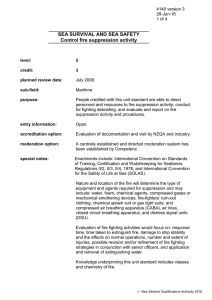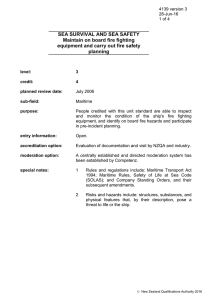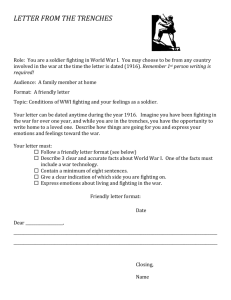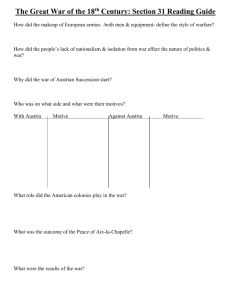SEA SURVIVAL AND SEA SAFETY Coordinate fire fighting activity
advertisement
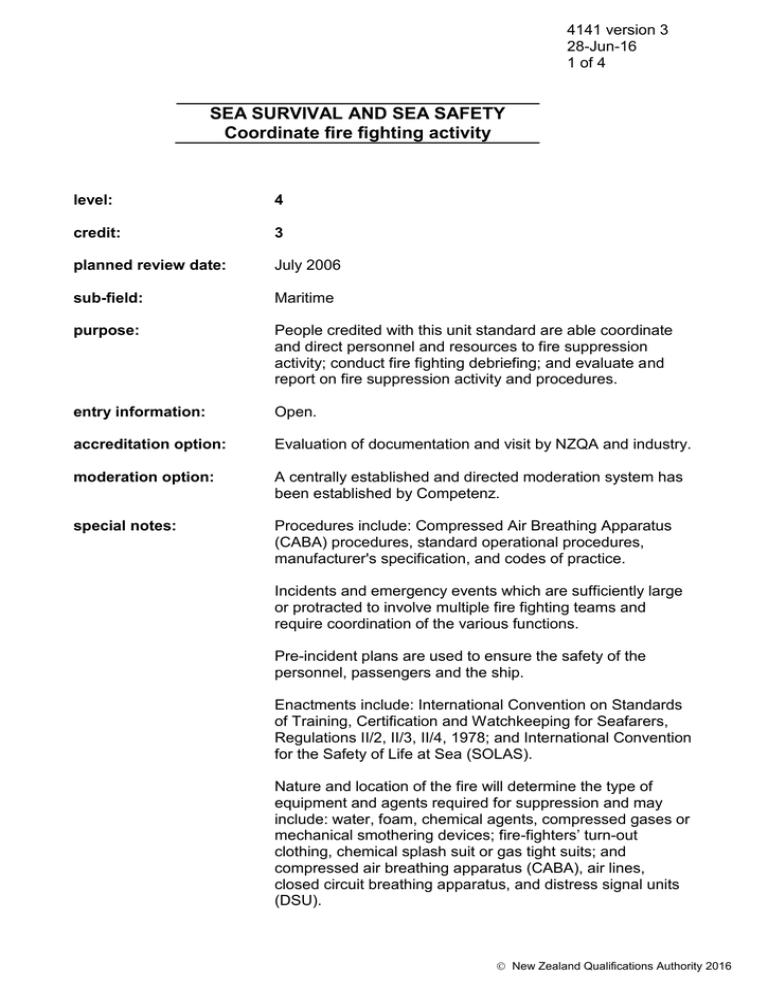
4141 version 3 28-Jun-16 1 of 4 SEA SURVIVAL AND SEA SAFETY Coordinate fire fighting activity level: 4 credit: 3 planned review date: July 2006 sub-field: Maritime purpose: People credited with this unit standard are able coordinate and direct personnel and resources to fire suppression activity; conduct fire fighting debriefing; and evaluate and report on fire suppression activity and procedures. entry information: Open. accreditation option: Evaluation of documentation and visit by NZQA and industry. moderation option: A centrally established and directed moderation system has been established by Competenz. special notes: Procedures include: Compressed Air Breathing Apparatus (CABA) procedures, standard operational procedures, manufacturer's specification, and codes of practice. Incidents and emergency events which are sufficiently large or protracted to involve multiple fire fighting teams and require coordination of the various functions. Pre-incident plans are used to ensure the safety of the personnel, passengers and the ship. Enactments include: International Convention on Standards of Training, Certification and Watchkeeping for Seafarers, Regulations II/2, II/3, II/4, 1978; and International Convention for the Safety of Life at Sea (SOLAS). Nature and location of the fire will determine the type of equipment and agents required for suppression and may include: water, foam, chemical agents, compressed gases or mechanical smothering devices; fire-fighters’ turn-out clothing, chemical splash suit or gas tight suits; and compressed air breathing apparatus (CABA), air lines, closed circuit breathing apparatus, and distress signal units (DSU). New Zealand Qualifications Authority 2016 4141 version 3 28-Jun-16 2 of 4 SEA SURVIVAL AND SEA SAFETY Coordinate fire fighting activity Reports are prepared outlining the effectiveness of the fire suppression activities, having regard to, the nature and location of the fire, damage to the ship and cargo, injuries and/or loss of life. The final report of the incident would include: cause of the fire; nature of the fire; location of the fire; numbers and types of injuries and/or any loss of life; recommendations for improvements in fire fighting techniques; any notable actions eg individual initiative, heroism etc; and any other information required under rules and regulations. Knowledge underpinning this unit standard includes classes and chemistry of fire. Elements and Performance Criteria element 1 Coordinate the activity of fire fighting teams. Range: the delegation to direct fire fighting operations is such that the responsibility is within the competence and skills of the officer. performance criteria 1.1 Coordination of teams maintains the efficiency of fire fighting operations and minimises the damage to the environment, ship, equipment, and personnel. 1.2 Strategies and tactics are chosen which are expedient, respond to the needs of the incident, and reflect the direction provided by the ship’s master. 1.3 Additional resources are deployed or re-deployed where the situation warrants. Range: 1.4 additional resources may include – manpower, lighting units, fire fighting equipment, protective clothing and/or life support equipment. Passenger safety, where applicable, is maintained by providing timely and accurate warnings of developing dangers utilising the ship's public address system. New Zealand Qualifications Authority 2016 4141 version 3 28-Jun-16 3 of 4 SEA SURVIVAL AND SEA SAFETY Coordinate fire fighting activity element 2 Monitor and report on fire fighting incidents and operations. Range: reports are prepared in accordance with Maritime guidelines and statutes, and may require the use of specific incident report forms. performance criteria 2.1 The progress of fire fighting activities is monitored through the regular receipt of verbal reports and personal observations. 2.2 The safety of individuals and the ship is monitored during the fire fighting activities through constant observation and feedback. Range: feedback may be verbal or written. 2.3 Reports from officers involved in the coordination of fire fighting team’s activities are collated and used to draft the final report on the incident. 2.4 Reports are prepared in accordance with rules and regulations. Range: 2.5 reports include – an assessment of the cause of the fire, an assessment of the effectiveness of the fire fighting procedures, number and extent of injuries to personnel, extent of damage to the ship. The final report is complete and is submitted to the ship’s master or chief engineer within the agreed time-frames. Comments on this unit standard Please contact Competenz qualifications@competenz.org.nz if you wish to suggest changes to the content of this unit standard. Please Note Providers must be accredited by the Qualifications Authority or a delegated interinstitutional body before they can register credits from assessment against unit standards or deliver courses of study leading to that assessment. New Zealand Qualifications Authority 2016 4141 version 3 28-Jun-16 4 of 4 SEA SURVIVAL AND SEA SAFETY Coordinate fire fighting activity Industry Training Organisations must be accredited by the Qualifications Authority before they can register credits from assessment against unit standards. Accredited providers and Industry Training Organisations assessing against unit standards must engage with the moderation system that applies to those standards. Accreditation requirements and an outline of the moderation system that applies to this standard are outlined in the Accreditation and Moderation Action Plan (AMAP). The AMAP also includes useful information about special requirements for providers wishing to develop education and training programmes, such as minimum qualifications for tutors and assessors, and special resource requirements. This unit standard is covered by AMAP 0054 which can be accessed at http://www.nzqa.govt.nz/site/framework/search.html. New Zealand Qualifications Authority 2016
